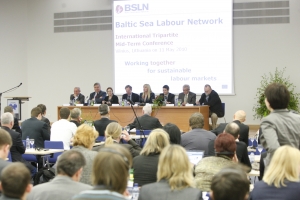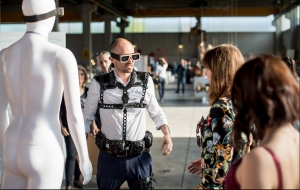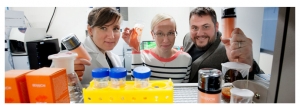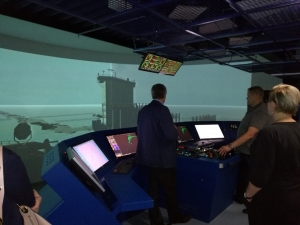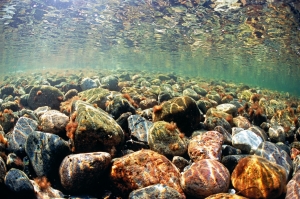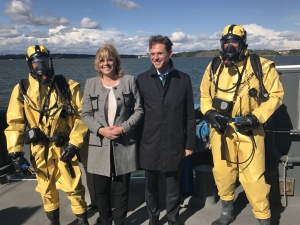Joint labour policy - made in the Baltic Sea Region
It’s been ten years since the global financial crisis expanded from the United States to the European Union. Among other negative effects, the Baltic Sea region was unpleasantly surprised by an emigration crisis in the east and intensive immigration to the west of the region. Transnational Interreg cooperation was vital not only to help people struggling with the different labour markets, but also to foster European integration for a more competitive Europe on a macro-regional level.
Baltic Sea region as a design comfort zone for seniors
Despite the progressing age of communities in the Baltic Sea region, needs of the elderly are not being sufficiently addressed by producers of furniture and home equipment. In the project BaltSe@nior, co-financed by Interreg Baltic Sea Region, by developing prototypes of intelligent furniture and upgrading design trends, companies are offered thriving opportunities to develop more suitable products for the elderly. Transnational cooperation that increases the comfort of life of seniors and at the same time fosters a more competitive Europe drew the attention of EU Commissioner Corina Crețu, who recently paid a visit to the project.
Jointly creating sustainable products from a shared sea
Red algae growing in the Baltic Sea are the special feature of facial creams in the Estonian cosmetics line Berrichi. But what’s more, it is the first product developed with the support of the Interreg-funded expert network ALLIANCE. The ALLIANCE is a European cooperation project and a flagship of the EU Strategy of the Baltic Sea Region. It brings together blue biotechnology actors from around the Baltic Sea to create new products and services.
Flagship projects FAMOS, STM Validation and WINMOS II - together for safer and more efficient shipping in the Baltic Sea
The Baltic Sea is a special region in many ways. It is one of the busiest maritime areas in the world, it is also one of the largest brackish water areas in the world and has a very sensitive and unusual combination of freshwater and ocean species, and it is surrounded by nine countries which all work hard on holistic regional collaboration.
EUSBSR Flagship status - what does it mean for a project?
In April, new Flagships were approved in the National Coordinators' meeting. We asked two of the newly approved Flagships what the status means to them.
CBSS Baltic Sea Science Day 2018: Joint Mapping of the Research Cooperation Patterns
The 2nd CBSS Baltic Sea Science Day was an integral part of the 5th Baltic University Programme Rectors´ Conference. The overall gathering demonstrated that sustainability and prosperity of the Baltic Sea Region is being developed on the basis of an inclusive dialogue on research-intensive sectors. Baltic University Programme is committed to align such efforts with UN Sustainable Development Goals. In this regard the CBSS Baltic 2030 Action Plan comes to the fore as the key reference point in the Baltic Sea Region setting. Baltic Science Network findings testify that functional proximity requires extensive discussions among research experts on their niche profiles and potential complementarities. Be it a pocket of excellence in blue growth, circular economy, zero waste or sustainable energy, Baltic TRAM open call highlights the necessity to exploit the full transnational potential of such a hub, which requires macroregional access and well-connected knowledge dissemination points.
EUSBSR Flagship status - what does it mean for a project?
A new Flagship project was approved by the National Coordinators under Horizontal Action Climate. The actions of the EU Strategy for the Baltic Sea Region are implemented by means of Flagships. Flagships demonstrate the progress of the Strategy, and may serve as pilot examples for desired action in a given field. What does the Flagship status mean for the newly approved project?
Spotlight on Policy Area Nutri: In search of effectiveness - Boosting projects reducing eutrophication & mobilising citizens to protect the sea
EUSBSR Flaghip project NutriTrade mixes activities to implement practical measures and to develop longer-term solutions to combat eutrophication. In particular, its digital crowdfunding platform Nutribute may prove to multiply the impact of the flagship over the time. Nutribute facilitates encountering of Baltic Sea savers and can be used as a fundraising tool for concrete measures to reduce eutrophication. In other words, Nutribute harnesses digital technology to contribute towards cleaning the Baltic Sea and thus contributes to the EUSBSR ‘Save the Sea’ objective.
EUSBSR Flagship status – what does it mean for a project?
In October 2017, three new Flagships of Policy Area Secure were adopted by the EUSBSR National Coordinators. The actions of the EU Strategy for the Baltic Sea Region are implemented by means of Flagships. Flagships demonstrate the progress of the Strategy, and may serve as pilot examples for desired action in a given field.
We asked the newly approved Flagships what the status means to them.
EUSBSR Flagship ChemSAR saves human lives
ChemSAR project is an EUSBSR Flagship aiming to no less than save human lives. Human lives will be saved by improving the efficiency of the rescue operations at sea. The rescue operations will become more effective with the help of standard operational procedures which the project creates, especially to be used in hazardous and noxious substances incidents.




